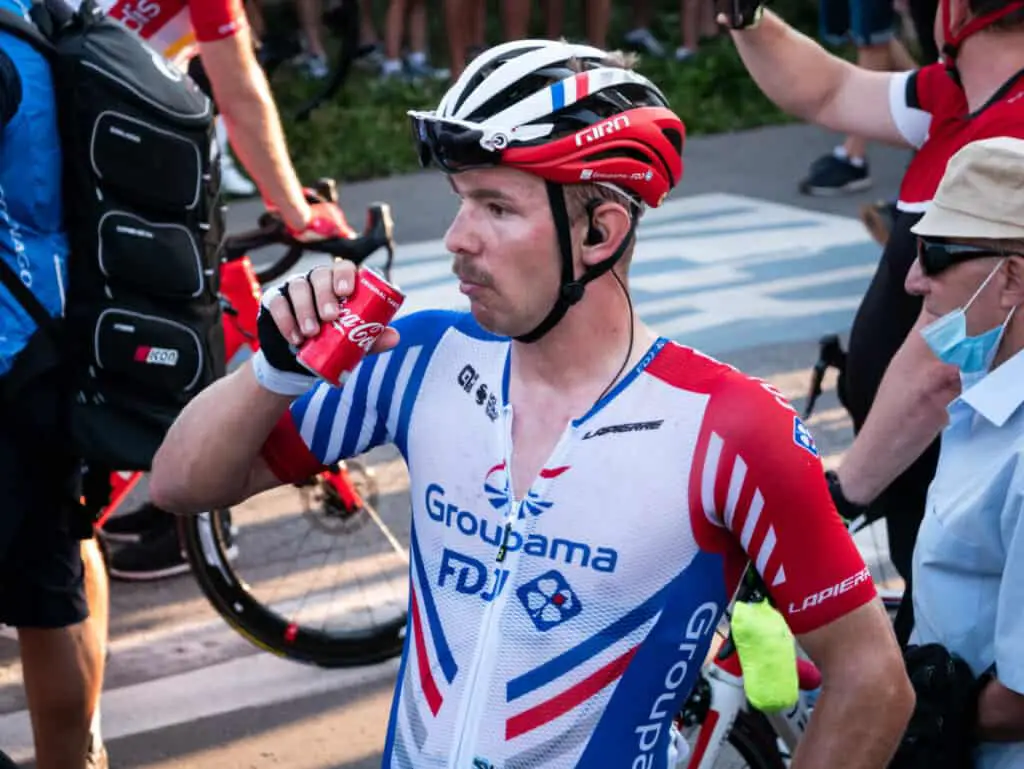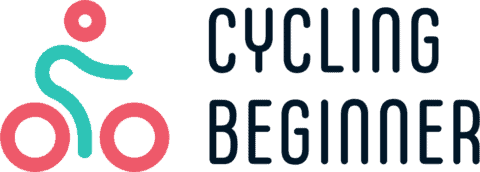Coca-Cola has been part of the cycling world for a long time. Cyclists are still happy to drink it today, often during a race and even more often immediately afterward.
Cyclists drink Coca-Cola because of its sugar, an important carbohydrate source. Caffeine is an added benefit, giving the cyclist an extra boost. Finally, Coca-Cola also has a positive effect on the morale of the cyclist as it breaks the monotonous taste of sports drinks and energy gels.
Coca-Cola is much better for cyclists than people think. It has many positive effects that help cyclists survive the tiring hours on the bike.
What effects does Coca-Cola have on cyclists?
There is a lot of skepticism about drinking Coca-Cola during the race or even after it. Even a quick search through the internet will give you the feeling that it’s the worst drink for a cyclist.
The truth is much different.
Coca-Cola can positively affect cyclist performance – both physically and mentally. It contains some of the key energy sources needed for endurance efforts. And let’s admit it, it tastes good, which is a huge morale booster after hours of consuming not-so-tasty energy gels.
| Per 100 ml (3,4 oz) | |
|---|---|
| Calories | 45 kcal |
| Sugar (carbohydrates) | 11.2 g (0.39 oz) |
| Caffeine | 9.7 mg (0.15 gr) |
“Contrary to popular belief, the composition of Coca-Cola is actually very friendly for the athletes,” says Tim Podlogar, nutritionist at professional cycling team Bora-hansgrohe.
Cyclists drink Coca-Cola mainly to get the sugar they need. It is one of the main sources of carbohydrates, which provides energy for longer endurance efforts.
Getting them quickly absorbed into the bloodstream is crucial, as this is the only way to provide the muscles with the energy they need to work.
The sugar in Coca-Cola is either sucrose or fructose-glucose syrup, depending on whether it is made in Europe or America.
Although in recent years it has been thought that the most effective way to obtain carbohydrates is through special sports drinks, Podlogar disagrees.
“Interestingly, evidence is pretty clear that Coca-Cola has almost optimal carbohydrate composition and very often even better than what special sports drinks are offering.”
“With Coca-Cola during exercise, we will see a quick absorption of carbohydrates into the bloodstream and perhaps sparing of glycogen. Add caffeine on top of it, we clearly have an ergogenic sports drink. The only missing component are electrolytes, but I am nitpicking here,” he added.
Caffeine is often added to gels and sports drinks as a ‘booster’. Doping rules do not prohibit it, so all teams regularly take advantage of its effect. If cyclists get it through Coca-Cola, they kill two birds with one stone.
Can you only drink Coca-Cola during the race?
Although Coca-Cola clearly has some positive effects, it cannot completely replace all cyclists’ drinks during a race.
Cyclists should drink between 1.5 and 2 liters of fluid per hour. Drinking that much Coca-Cola is near impossible, and even if one could do it, it would upset his stomach, causing him many problems.
Another problem with Coca-Cola is that it is carbonated. This can cause further gastric problems, and some people even report that it triggers reflux, as cyclists spend most of the race in a low-angle body position.
Some cyclists fight that by opening it beforehand and drinking it flat. In most cases, this is easily achievable at the finish line, while during the race, cyclists usually receive a can that is still sealed. And you can imagine that they don’t wait very long before drinking it.
Is it better to drink Coca-Cola during or after the race?
Cyclist drinks Coca-Cola both during and after the race. It is more often drunk after a race, but you can also see them drink it on a bike on some longer races.
If they drink it during a race, the main focus is on the psychological effect. Sure, they still get carbohydrates and caffeine, but they can also get it in other ways, whereas no sports drink can replace the taste of Coca-Cola.

After the race, the carbonation of Coca-Cola is not as much of a problem as it was during the race. I already mentioned that they often drink it flat, but even if it’s still fizzy, the potential issues are not so harmful as during the race.
Cyclists often don’t have much time after the finish. Podium ceremonies, potential doping controls, and media obligations can take much time. The recovery window, during which carbohydrate intake makes sense, is then closed.
There is no time to eat some pasta or other carbohydrates-heavy food. But there is time to drink a can of Coca-Cola before continuing with the obligations.
Carbohydrates should be consumed within 30 minutes to 4 hours after exercise. The sooner, the better.
“After exercise, Coca-Cola is great as well,” Podlogar explains.
“Ingestion of glucose-fructose based carbohydrates optimally stimulates both liver and muscle glycogen replenishment rates and is this way even better than normal carbohydrate sources like pasta or rice.”
“Coca-Cola is thus a practical solution for increasing carbohydrate intake. However, its dose should probably be tailored based on the general carbohydrate requirements.”
How much Coca-Cola is recommended in a race?
Drinking Coca-Cola as the only source of fluid is not recommended. It’s not advised to use it as a sole source of carbohydrates, either.
“We treat Coca-Cola and Fanta as a bit of a comfort food for the riders, and they often get it on the bike,” Podlogar explains.
But the amount cyclists drink is pretty minimal.
“One can per race or so.”
Teams usually use 15 milliliters (0.5 oz) cans, which means riders drink just 15 milliliters of Coca-Cola during the race. Even after the race, the amount doesn’t change. One can, and that’s it.

I will highlight again the psychological effect that Coca-Cola has on cyclists. If the team notices that one of the riders struggles, they might give him the second can to help him overcome the dark minutes.
However, Podlogar points out that increasing the amount of Coca-Cola because of carbohydrate intake makes no sense. It is better to get these in through other sources.
“I would probably go against using Coca-Cola as a sole source of carbohydrates but rather as an additional source,” he explained.
Should I also drink Coca-Cola on my rides?
We – the amateurs – like to copy the behavior of professional cyclists. Should we also copy them with drinking Coca-Cola during our rides?
“Yeah – if you like it,” says Podlogar.
You can drink Coca-Cola on your rides, but it would only make sense to use it as an energy source on rides longer than 30 miles (50 kilometers).
Do not pour Coca-Cola into a bidon. The carbon dioxide will increase the pressure in the bottle, which can cause a rather wet and sticky explosion of the bidon.
There is one major problem with taking Coca-Cola with you on a ride. While professional cyclists get nice and cold Coca-Cola from the team car during the race, you won’t be that lucky.
We ride unsupported, so everything we want to have with us, we need to carry ourselves. You can imagine that riding with a can, even as small as 15 milliliters, at the back pockets is not the most comfortable thing in the world.
Another problem is that no matter how cold your Coca-Cola was when you took it out of the fridge when you will want to drink it on a bike, it will be warm at best.
Drinking warm Coca-Cola? No thanks, I’m good.
I would much rather leave the Coca-Cola in the fridge and drink it after the ride. But hey, whatever floats your boat.

